Photographs: Arko Datta/Reuters Raghavendra Kamath in Mumbai
Ramjibhai Pitambar Tak, 62, makes earthen pots for a living. He has been making them for years now in Kumbharwada, an obscure, smoke-filled locality in the 535-acre Dharavi, Asia's largest slum in the heart of Mumbai.
Putting more fuel into the large cauldron of fire, Tak says his only request to the state government is 'leave us alone'.
Narendra Devaliya, his neighbour, says he has heard local politicians talk about the Rs 15,000-crore (Rs 150 billion) Dharavi Redevelopment Project which is aimed at bettering slum-dwellers' lives, but doesn't believe a word of it.
"Nothing will happen here for at least five years. Everything is in a mess," he adds.
The cynicism of Tak and Devaliya is grounded in reality. Almost two-and-a-half years after the Maharashtra government unveiled its show-piece project to transform Dharavi into a model township and a world-class commercial hub, not an inch of mud has moved. further. . .
Why plans to make Asia's largest slum a biz hub have failed
Image: Dharavi, Asia's largest slum.Photographs: Sahil Salvi
What has gained momentum with each passing day is mud-slinging by different authorities entrusted to take the project forward.
The red-tape, however, hasn't tired of working overtime. The bid process was delayed by almost two years and then seven qualified bidders opted out over delays in the past one year.
The submission of financial bids has been postponed thrice this year on the ground that the development control rules are still being finalised.
The original plan envisages dividing the slum into five fully self-sufficient sectors, complete with jogging tracks, open spaces, commercial set-ups, and educational and healthcare institutions.
Dharavi's redevelopment was to make available five million square feet of new office and residential space in the near term and a humongous 40 million square feet over seven years.
Why plans to make Asia's largest slum a biz hub have failed
Image: DharaviPhotographs: Sahil Salvi
"The project itself was ill-conceived. The views of Dharavi residents were never considered. Sitting in an ivory tower, you cannot conceive such projects. If it is in earlier form, the people will throw it away. It has to change and be adjustable to the people of Dharavi," says Chandrashekhar Prabhu, a housing activist and member of the state-appointed committee of experts on the redevelopment project.
Some local residents agree. "We do not want an area of 300 square feet that has been offered to us. Some of us live in 700 sq ft, some in 1,000 sq ft. How can they give only 300 sq ft? They (the government) should also give a separate place to do our work or alternative occupation," Devaliya adds.
The project faltered from the beginning with the Slum Rehabilitation Authority of Maharashtra extending the submission of bids thrice in 2008 and the row over the size of flats to be allotted to the dwellers. The sizes were later increased from 225 sq ft to 269 sq ft and then 300 sq ft. However, the dwellers had been demanding houses of at least 400 sq ft.
But 2009 saw further roadblocks. The expert committee appointed by Maharasthra Chief Minister Ashok Chavan last year slammed the project as "a sophisticated land grab and one driven by personal greed," and called for a complete overhaul of the project.
Why plans to make Asia's largest slum a biz hub have failed
Image: A general view of Dharavi, considered Asia's biggest shantytown.Photographs: Punit Paranjpe/Reuters
Amidst all this, developer interest in the project has waned. Niranjan Hiranandani, managing director of Hiranandani Constructions which earlier opted out of the project, says, "People have lost confidence as they are not sure whether the project will see the light of the day at a time when the property market is down."
Sarang Wadhawan, managing director of HDIL, a Mumbai-based developer, which opted out earlier, says the main issue with the project is lack of clarity on rehabilitation and resettlement of people.
"The project still has viability provided the parameters of rehabilitation are worked out. If clarity emerges on this front, we will look at the project again," says Wadhawan, whose company is one of the largest players in slum rehab projects.
Why plans to make Asia's largest slum a biz hub have failed
Image: A woman makes earthen pots for Navratri in Dharavi Kumbharwada.Photographs: Sahil Salvi
However, some developers feel that projects of this size take time and can't be done overnight. So, one should have patience, says Nayan Bheda, MD of the Neptune group which is still in the fray.
Though the project was expected to get a new life after the new government took charge in Maharashtra, recent studies and reviews commissioned by government bodies have put fresh question marks on the project.
A study conducted by the Brihanmumbai Municipal Corporation assistant commissioner showed that 63 per cent of the dwellers were ineligible for rehousing in one of the five sectors of Dharavi.
The Dharavi Development Authority has come up with a new plan for development of the two-square-km Dharavi into 32 clusters instead of five sectors planned earlier, to avoid further delays and agitation from those who have been left out.
Recently, the government also endorsed this view, saying that the entire project needed to be reviewed and certain parameters needed to be changed, thereby delaying the project further.
Why plans to make Asia's largest slum a biz hub have failed
Image: A glimpse of DharaviPhotographs: Sanjay Sawant
The Dharavi Development Authority also felt that seven bidders for five sectors did not lead to healthy competition and more developers had to be included in the project.
Though DDA chief executive Gautam Chatterjee declined to comment, a senior government official, batting for the original plan, said the new plan would hardly make any difference and make more slum-dwellers eligible for rehabilitation and settlement.
"Whether it is 5 sectors, or 32 clusters, it will not make any difference. We found that density varies from cluster to cluster. If you divide the whole area into 32 clusters, then you will have more developers which will again lead to problems," he said.
The official also said they had taken people's consent before starting the project as against the allegations that the original plan makers had not taken the views of slum-dwellers.

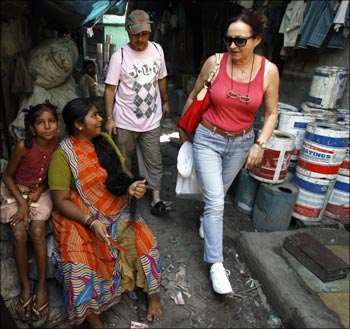
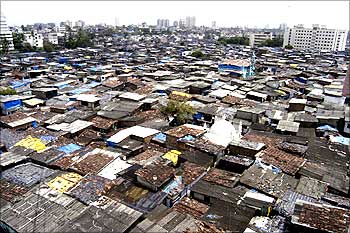

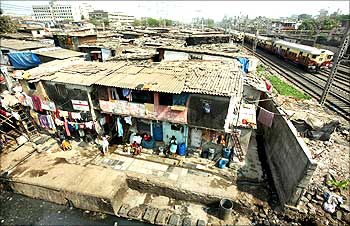
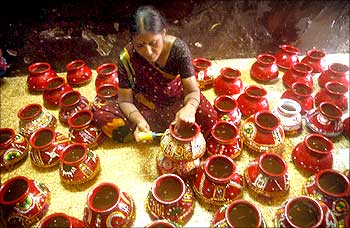
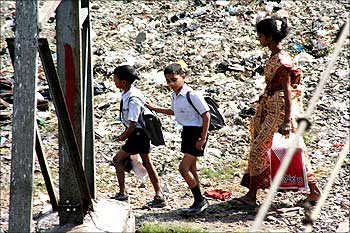

article